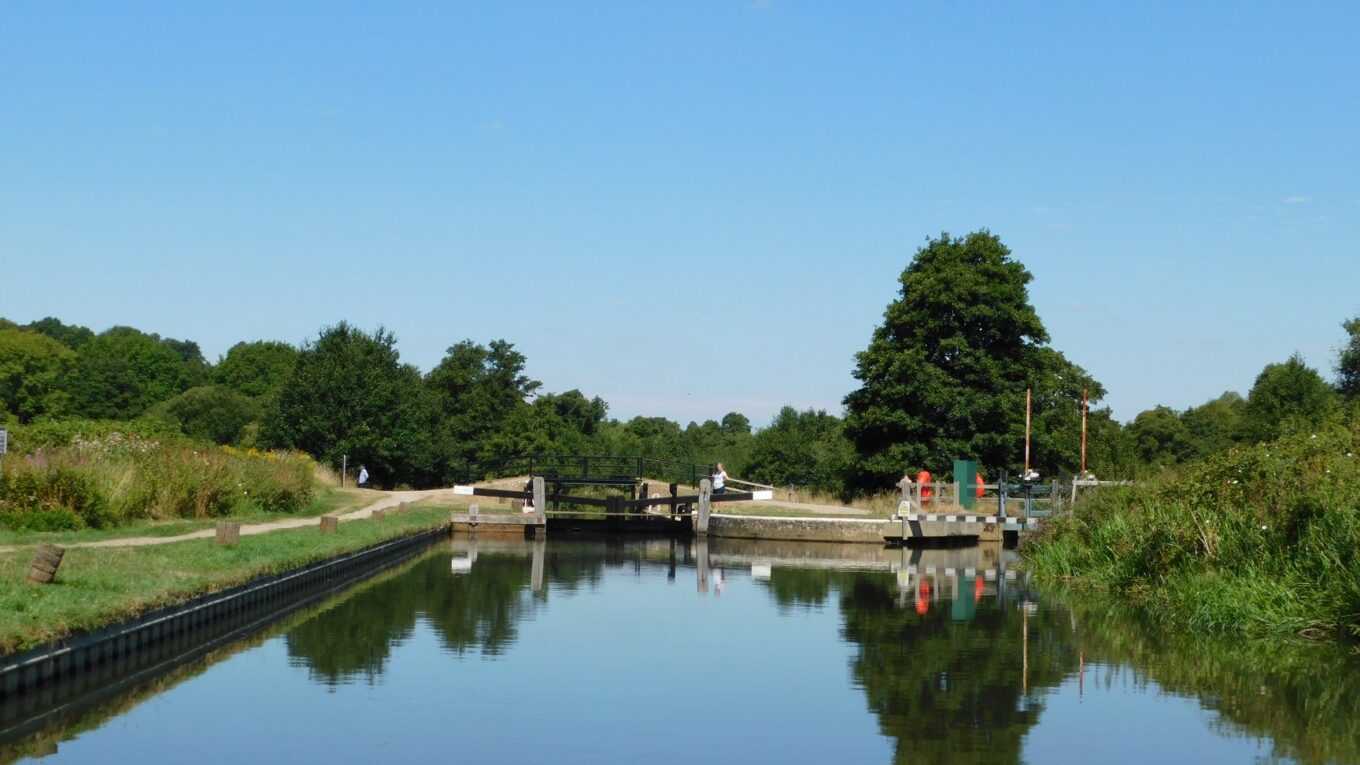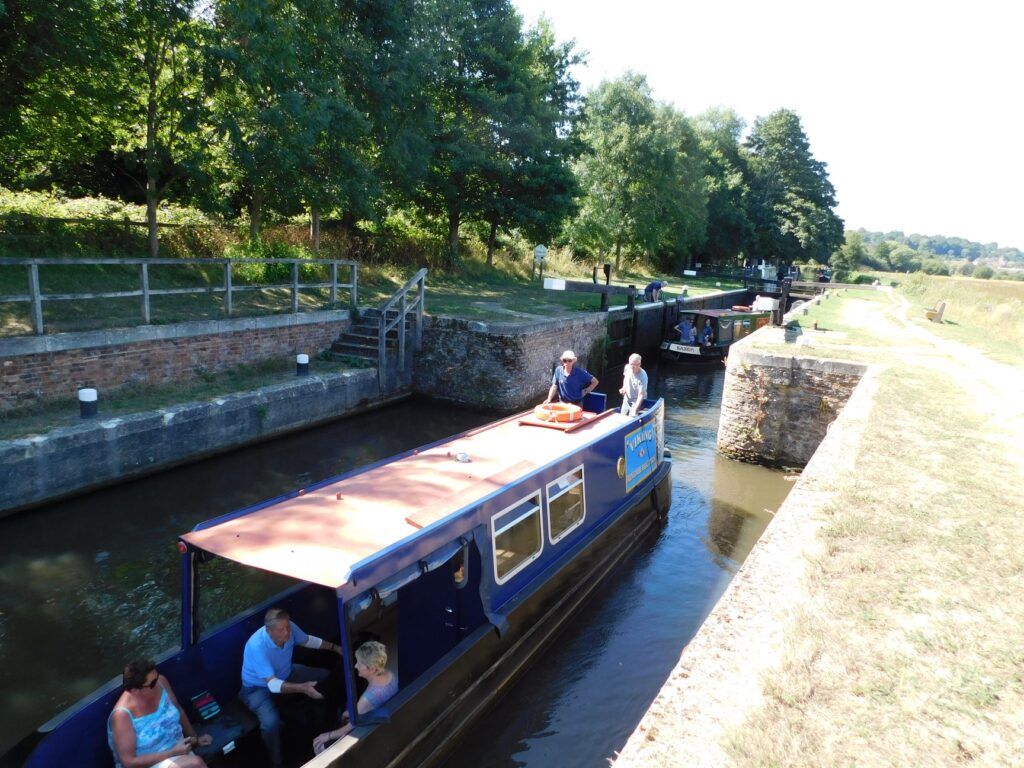A lot about locks
We speak with lots of first time boaters here at Waterways Holidays, giving advice on the most suitable boats or routes for a holiday. However, one thing does tend to become apparent and that is a ‘fear of the unknown’ when it comes to working locks.
In fact, most locks are simple to master and are reasonably easy to open or close; they break up the quiet waterways; adding interest (along with lift-bridges, swing-bridges and aqueducts) by providing some welcome activity for children and adults alike.
You’ll need a minimum of two people to work a lock; one to drive the boat and the other to open or close the gates. The person driving the boat will normally drop the ‘lock person’ off on to the nearby towpath beforehand. The driver would also get off the boat and hold (or tie up) a mooring rope to steady the boat as the locks are opened; eventually proceeding slowly and gently into the lock.
If the water in the lock is already at the same level as your boat, the gates can open up ready for the boat to enter*. If the water is at a different level to your boat, the lock person will need to open the underwater ‘sluices’ using a ‘windlass’ (lock handle) to allow water to run in or out, eventually matching the water level you require.
This means fitting the windlass onto the metal lock ‘bolt’ and then turning it round and round to lift up the mechanism; letting water move into (or out of) the lock through the sluices as you go. Most locks will open easily; although there are some that can prove more of a challenge.
When letting water into an empty lock, it is best to only open the sluices half way at first. This is so that a big gush of water doesn’t go all over the front of your boat. When your boat very gently moves forward of its own accord to touch the front lock gates with its ‘button fender’ it is then time to fully open the sluices up, allowing the lock to fill. Make sure the boat moves back from the front lock gates once the button fender has touched. This avoids getting caught up anywhere.
Once the boat is in the lock you may wish to steady it with a mooring rope….just wrap the rope around one side of the mooring post (or ring) provided without tying it up. As the boat moves up or down in the lock you can adjust your hold on the rope. This is particularly useful if the lock is wide or made for two boats at a time. On some of the narrower locks it is not always necessary to use a rope. This is because the boat is held in place by the walls of the lock chamber.
Whilst waiting for a lock to fill or empty, it’s a good idea to rest your bottom on the arm of the lock gate and lean against it. Once the water level is correct you will feel the lock gate move (or give) a little, which means it’s ready to open. Locks take about 10 – 15 minutes on average to fill or empty; so usually a good time for someone on the boat to make a cuppa (not the driver who must stay aware) and for the lock person to sit back and enjoy their surroundings.
Once the lock gates are ready to open, lean your back against the arm of the lock and push backwards. Use your legs for extra leverage, until the gate is open (do this on both sides if the lock has double gates). Once the boat slowly leaves the lock you can shut the gates; but before leaving the locks you must also close all of the sluices using the windlass to drop them down. Very Important: leaving sluices open can cause terrible water loss on canals.
Every lock has a ‘CILL’ which is very clearly marked with a white stripe and the word ‘CILL’ painted on the side of the lock. The cill is a protruding stone or concrete ledge at one end of the lock chamber. It’s usually located behind your boat when you are coming ‘down’ in a lock. It is important to avoid the cill when you are in the lock. Particularly if you are entering a full lock and emptying it of water; otherwise you could get the boat stuck on a tilt and unable to move freely. Obviously, the shorter the boat you have the easier it is to stay away from the cill; but you should be aware of its location at all times.
Quite often another boat crew will be at the locks too. It is good manners to offer them help with the lock if you are waiting to go in after them. Do ask first just in case! In the same way, you might have assistance from another crew. Particularly if you are using a double lock which takes two boats at a time. Always share a lock where possible to conserve water. Even if this means waiting a few minutes for another boat to catch up with you.
Most other boaters tend to be very helpful, so if in doubt just ask.



